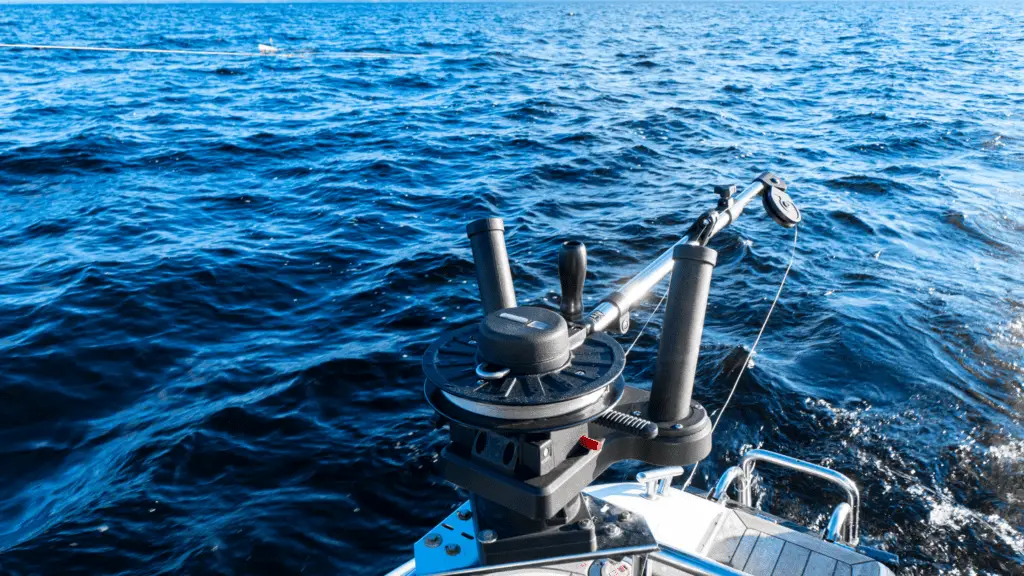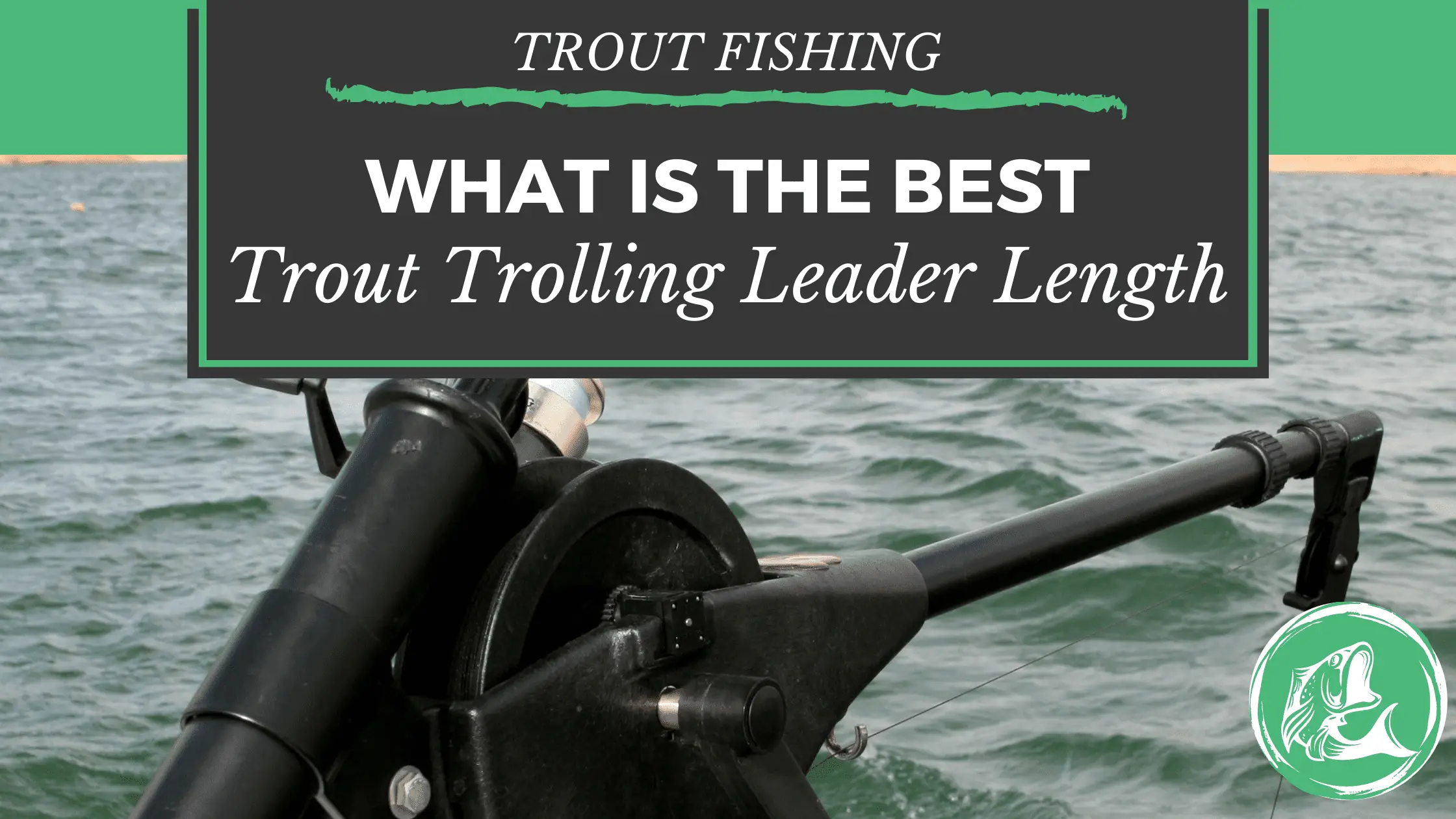
Anyone who has fished for trout has some tips about the best techniques, the right bait, and sure-fire lures. But those who catch trout using a boat believe that the best technique to fish will always be trolling. This fishing method uses one or more lines with lures; the lines are drawn in the water from a moving boat.
According to professionals, the best trout leaders should be from 12 to 18 inches in length; however, some may argue that the best is just 5 to 6 feet. Some anglers recommend a longer leader. Monofilament lines work best, especially for offshore fishing.
Trolling is an effective trout fishing strategy and is also fun. It’s a guarantee that you’ll get the best results each time you use trolling to catch trout. Find out more about trolling and how you can use this technique on your next fishing activity in this guide.
How Does Lake Trolling for Trout Work?
Trolling is a time-tested strategy to catch trout, passed on from generation to generation. It is easy to learn and, thus, can be used by beginners and experienced users. Usually, people who had learned trout fishing with trolling started when they were young. Combine trolling with a good lake troll, and you can catch trout of all sizes anywhere.
Trolling with a Snubber
Trolls are commonly used to catch fish with delicate mouths like kokanee. A troll with a rubber snubber helps you catch trout with excellent precision and minimal effort. A snubber is a surgical tubing with a coiled line that swivels and is connected to both ends. Should a fish bite, the snubber will stretch to accommodate the impact but soon retract and clip the fish from the mouth.
Snubbers are available in different sizes: light, medium, and heavy. This depends on the pound test of the trolling leader you want to use.
Troll for Trout Slowly and Quietly
When using trolling to catch trout, consider a slow but sure pace. Big trout will not spend much energy to catch food, so not all lures will work great. Take it slowly, and the slower your pace is, the better.
Anglers who use trolling to fish for trout will not use a motorized boat as this may be too fast for this technique. Instead of a motor, they use oars so as not to disturb fish.
You may use a motor, but this should throttle down to not make too much noise or commotion in the water. In some cases, anglers who love to use trolling prefer a multi-speed motor or a gas motor in 2 HP. These are great ways to move while trolling on a lake.
Change Your Speed
Live bait moves in different patterns and speeds; some may move slowly and will speed up unexpectedly. If your artificial bait simply moves in regular vibration patterns, then it’s less likely that it will attract any fish.
Slow and quiet movements help you troll successfully. But, this doesn’t mean that you need to be slow throughout your activity. Trout are smart fish and will eventually prefer a lively living bait to an artificial lure.
Try the “S” Curve Method
Trolling is an “S” curve is one of the most popular and very effective strategies. The “S” pattern works best as every time your troll and lures swing inside of your boat, these will move deeper and will move slower.
When the troll and lure move outside the boat, these will quickly speed up and move upwards. Every turn, the troll will move differently, which tells the trout that it’s its feeding time.
Other Trolling Tricks
The previous trout trolling strategies guarantee excellent results. But in case these don’t work, you can always try the following techniques:
“S” Shape Pattern + Jerking Movements
Sometimes, the “S” shape pattern won’t yield any results because of its regular, boring movements. Trout will soon become suspicious of your trolling line. What you must do is combine an “S” shape pattern with a few jerking movements.
A sharp tug at about a few minutes apart will keep the troll interested and follow your line. Let the lure drop dead and then move after a few minutes and then let it come to life and then continue trolling. You will get better hits when you create erratic moves rather than letting them move predictably in the water.
A Longer & Lighter Leader
If you just can’t get any bite, switch to a longer and lighter leader from your troll and lure. We recommend a six-pound high-quality mono line with a small diameter. Try Trilene XT or Trilene XL because this is very thin for fish to see. The monoline comes with excellent knot strength with amazing tensile strength.
Move Faster for a Few Feet
Yes, we mentioned moving slowly and surely; however, there are cases that there’s just no fish to bite your troll and lure. What you need is to stimulate the water and entice action. So the trout are hiding under rocks, holes, and various crevices in the deeper part of the hole will come out.
Fast and loud motor movements can stir up the water and will make your line look lively. Trout will likely come out and take a closer look and eventually take a bite. Try this trick for a few feet and then slow down but don’t stop.
Quick and Erratic Movements
Live bait moves erratically through the water, especially near the surface. Trolling is simulating these movements to lure unsuspecting trout out of their hideouts. Study the trout’s natural live food movement and see if you can copy these using your trolling line.
Know the water you wish to fish in and understand the natural feeding behaviors of trout species found in the area. All these help you improve your angling and trolling activities.
Get Help From Technology
Aside from determining the length of your troll and lures, studying the movements of your troll helps. Two must-have accessories improve trolling success. Trolling speed indicators like the Luhr-Speed and a good depth finder tool.
Most lures come with optimum speeds, and these should be considered for the best results. Trolling speed indicator tools are very accurate and can be mounted on any boat (motorized or non-motorized boats). Meanwhile, depth finders like Bottomline depth finders help you find schools of fish so you’ll know where to place your lures.
Top 4 Types of Trolling Leaders For Top Results
Selecting the right type and length trolling leader is essential to success. Experts agree that a heavy monofilament line or a fluorocarbon line will yield maximum results to offshore trolling. Some say that 12 to 18 feet of line will do just fine, but some say it does not matter. You can go as long as 25 to 30 feet. Please note that the longer your line, the more likely that knots may occur, which greatly affect the mainline and jam your lines. So, to avoid these, anglers have tried several approaches.
1. Wind-On Leaders
This is a monoline with dacron and a looped end. The mono is inserted inside the dacron, and this is held together by friction. As you pull on the dacron, the diameter narrows down and grips the monofilament line.
2. Wire Leaders
For large fish, wire leaders with heavy mono leaders provide safety and excellent results. This is best for the catch and release activities as this line may damage the fish’s body.
3. Fishing Leaders with Low Line Visibility
A good example of this leader line is fluorocarbon. Combine this line with the standard “S” moves, and you’ll get great results.
4. Stretchy Leaders
This stretchy monofilament line is better than a non-stretchy one as the latter may allow a hooked trout to shake free from the lure.
Trolling success is also dependent on practical techniques. Successful anglers usually start by prospecting a lake. Some trolls and lure sizes work only on a particular section of the lake but not in the deepest parts. Prospecting saves you time and lets you prepare your lure, bait, and trolls ahead of time.
Find trout food sources in the area. Look for minnows, crayfish, salamanders, bugs, beetles, and midges. Check for surface activity and locate schools of smaller fishes. Move towards inlet and outlet areas where there’s a lot of food. Areas near the shore, such as those with overhanging trees and shrubs, are places where tiny insects settle and where trout will have a feast.
Trolling has its advantages and disadvantages. Learn this technique well and study the area well, and you’ll surely be rewarded with a good catch.


